Introduction
Fires on board container ships have become the scourge of the container shipping industry. Recent reports confirm the cause often lies with the shipper’s misdeclaration of dangerous cargo. The consequences include crew injuries and fatalities, environmental pollution, cargo destruction and – in several cases – the total loss of the carrying vessel. This Risk Bulletin highlights the serious risks of shipper misdeclarations – deliberate and otherwise – and recommends critically important loss prevention measures.
Background
The hazards arising from the carriage of dangerous goods in sealed and, therefore, difficult to access and inspect containers have been known for decades. This is confirmed by a USA National Cargo Bureau (NCB) report, which advises that five years ago, during a cooperative container inspection involving several major container lines, the NCB discovered that:
“… an unsettling 55% of inspected containers were noncompliant, with 43% failing due to poorly secured dangerous goods, and an astonishing 6.5% found to be carrying misdeclared dangerous cargoes.”
Further that:
“Subsequent inspections, performed by NCB, have continued to reveal poorly secured dangerous goods in containers, as well as undeclared and misdeclared shipments of dangerous goods such as charcoal, flammable liquids, and used lithium-ion batteries.”
Because of the NCB’s initial and subsequent findings, as well as the recent spate of container fires and associated concerns (including containerised lithium-ion battery fires), the NCB have embarked on a new and global container inspection initiative. Whether they will find an improved or deteriorating situation is not yet known. However, the current frequency of container fire incidents suggests a worsening scenario with an urgent need to both improve shipper knowledge and enforce deterrents against deliberate cargo misdeclaration.
NOTE: With respect to deterrence, several container lines (inclusive of Evergreen, OCL, PIL, Hapag Lloyd and Wan Hai) have imposed shipper penalties of between USD 15,000 to USD 30,000 for hazardous cargo misdeclaration, plus all related costs of mitigation. The efficacy of these penalties – first initiated in 2019 – appears to be unreported.
Regulatory Requirements – the IMDG Code
The regulations for the carriage of dangerous goods in packaged form by sea are contained within SOLAS, as amended, at Chapter VII and within MARPOL, as amended, at Annex III. The IMO’s International Maritime Dangerous Goods (IMDG) Code webpage explains that the Code provides a comprehensive guide to the requirements of both SOLAS and MARPOL as well as the UN Recommendations on the Transport of Dangerous Goods (UN Code). As stated, and explained within IMDG Code, some parts are mandatory, and some are recommendatory.
As to applicability, the IMDG Code applies to all dangerous goods in packaged form shipped on board vessels 500 GT or over and engaged in international trade. All such vessels must carry a flag state Dangerous Goods Document of Compliance (DGDoC) which confirms vessel compliancy with the construction, equipment and firefighting requirements specified by SOLAS Chapter II-2/19.4.
NOTE: Members who operate vessels carrying dangerous packaged goods in domestic trade should confer directly with their flag state authority or appointed RO to establish their obligation to comply with similar NCVS requirements.
IMDG Code Ed. 2022 Contents
Vessels carrying dangerous packaged goods must carry or have ready access to the 2022 edition of the IMDG Code, Vols. 1 and 2 and Supplement, all of which came into force on 1 Jan 2024.
NOTE: The above publications are reviewed and updated by the IMO on a two year basis. The current edition must be available to comply with both IMDG Code and PSC inspection requirements.
Volume 1 contains detailed instructions for safely preparing and transporting dangerous goods by sea:
Part 1: General Provisions, Definitions, Training, Security and Radioactive Material Transport
Part 2: Classification
Part 4: Packing and Tank Provisions
Part 5: Consignment Procedures
Part 6: Construction and Testing of Packaging’s, Intermediate Bulk Containers (IBCs), Large Packaging’s, Portable Tanks, Multiple Element Gas Containers (MEGCs) and Road Tank Vehicles
Part 7: Provisions Concerning Transport Operations
Volume 2 contains the essential details of the dangerous goods which may be carried by sea and their handling and stowage requirements.
Part 3: Dangerous Goods List (DGL), Special Provisions and Exceptions (Limited and Excepted Quantities)
Appendix A: list of Generic and Proper Shipping Name (PSN)
Appendix B: glossary of term
Alphabetical Index of PSNs
Supplement contains information directed primarily at the ship’s crew.
- Emergency Response Procedures for Ships Carrying Dangerous Goods inclusive of a Medical First Aid Guide.
- Reporting Procedures.
- Safe Use of Pesticides on board ships, including in cargo holds and containers.
- International Code for the Carriage of Packaged Irradiated Nuclear Fuel, Plutonium and High-level Radioactive Wastes on board ships.
- Appendix providing relevant IMO Resolutions and Circulars.
IMDG Code Dangerous Goods Classes and Shipping Requirements
The IMDG Code details the transport by sea requirements for 9 Classes of Dangerous Goods being:
Class 1 – Explosives
Class 2 – Gases
Class 3 – Flammable liquids
Class 4 – Flammable solids; substances liable to spontaneous combustion; substances which, in contact with water, emit flammable gases
Class 5 – Oxidizing substances and organic peroxides
Class 6 – Toxic and infectious substances
Class 7 – Radioactive material
Class 8 – Corrosive substances
Class 9 – Miscellaneous dangerous and environmentally hazardous substances
In summary, the IMDG Code requires that packaged dangerous goods are:
- Classified and clearly identified.
- Packed to agreed minimum standards.
- Marked and clearly labelled.
- Fully documented.
- Properly stowed and secured.
- Segregated from other dangerous goods with which they may react.
- Provided with emergency response information.
- Subject to security requirements which minimise terrorist opportunities to access and misuse dangerous goods.
IMDG Code Training
With respect to all shore personnel involved in the transport of dangerous packaged goods by sea, Chapter 1.3 of the IMDG Code stipulates that appropriate and comprehensive training must be provided to all shore personnel The scope of the training obligation is dependent on job description and level of responsibility.
NOTE: Online courses are available which provide shore personnel training, assessment and certification e.g. see the NCB Hazcheck online courses available for Ship Operators, Freight Forwarders and Cargo Handlers, and are all certified by Class DNV as being IMDG Code compliant.
With respect to vessel crew, the shore personnel training requirements of the IMDG Code are effectively repeated in the STCW Convention, as amended, at Section B-13,relating to ships carrying dangerous and hazardous substances in packaged form. This includes both STCW and IMDG Code principles and their shipboard application.
NOTE: Members operating vessels which carry dangerous packaged goods should check to ensure that the STCW training requirements provided to their Masters and crew are up to date and in conformance with the IMDG Code 20222 Ed. If there are any concerns as to compliance, then Members should prioritise STCW/ IMDG Code re-training and re-certification.
Lessons Learned – the KMTC HONG KONG fire and explosion
Calcium hypochlorite (a dry powder form of bleach commonly used for water purification) is listed as an IMDG Code Class 5.1 Oxidiser. It decomposes during storage and transit and this process gives off large amounts of heat. If inadequately ventilated – as often occurs when it is stowed inside containers – then fire and explosion will likely occur.
A well-known ‘lessons learned’ case is provided by the fire and explosion on board the container ship KMTC HONG KONG at a port in Thailand in May 2019. The cause was attributed primarily to 13 containers of calcium hypochlorite which were deliberately misdeclared by shippers as “dolls”. Why? Likely because the shippers wished to avoid dangerous cargo freight surcharges. Or that they feared their containers could be refused for loading by KMTC. Possibly both.
The IMDG Code places a clear obligation on the shipper to accurately declare and properly document all dangerous cargo. This is to ensure the vessel owner, crew and port and customs authorities are made fully aware of the associated risks.
Once declared, shipboard precautions can then be taken, inclusive of stowing containerised dangerous cargo on and not below deck and positioning these containers well away from both other volatile containers and the crew’s accommodation. However, if the shipper misdeclares a dangerous cargo – either in error or deliberately – the IMDG Code based protections collapse. The carrying vessel and her crew are then subjected to potentially deadly levels of fire and explosion risk.
In the case of the KMTC HONG KONG, the shipper’s deliberate misdeclaration resulted in the obstruction of pro-active shipboard risk management. The result was a catastrophic event with the hospitalisation of a reported 130 people, massive damage to the ship and adjacent container cargoes, huge clean-up costs and a significant loss of freight and charter income.
Conclusion and Takeaway
Calcium hypochlorite has been misdeclared on numerous occasions as ‘calcium chloride’, ‘disinfectant’ or ‘whitening powder’ to avoid detection and potential container rejection. Other misdeclared dangerous cargoes include charcoal (declared as ‘tablets for water pipes’) and used lithium-ion batteries loaded in a container (misdeclared as ‘mobile phone accessories’). The list of shipper deceits appears to be ongoing and endless.
NOTE: An article titled ‘Using AI to detect misdeclared cargo’ published June 2023 by insurers AXA advises that:
“Misdeclaration of container contents was the catalyst for 27% of cargo ship incidents in 2016. As recently as 2020, 33% of all misdeclarations were willful, either due to high hazardous [goods] surcharges or to carrier restrictions/prohibition of products that are in high demand.”
So, what can be done by Members who operate container ships to reduce the ‘misdeclaration’ of dangerous cargoes?
MM’s hazard reduction recommendations to Members who operate purpose-built container vessels or who carry containers on board their vessels are as follows:
- Members should confer with their ship/crew managers, DPAs and masters to ensure that all personnel involved in the shipment of containerised dangerous cargo meet both STCW Convention and IMDG Code Ed. 2022 training standards.
- Members should ensure that specific reference is made to the obligation to fully comply with the requirements of the IMDG Code Ed. 2022 (or as subsequently amended), in their ISM Code or NCVS equivalent SMS manuals and procedures. Further, that compliance is confirmed by both ISM Code internal and external audits.
- Members should refer to the Cargo Incident Notification System (CINS) Website to review the wide range of containerised dangerous cargo publications, which are available online and free of charge. They include ‘Guidelines for the Carriage of Calcium Hypochlorite’ and ‘Guidelines on Lithium-Ion Batteries in Containers’.
NOTE: Members are encouraged to consider CINS Membership to gain full access and contribute to the CINS container cargo incident notification and information system. - Members need to ensure a high level of awareness amongst their shore staff and shipper/customers of the serious hazards to their ships, crews, cargo and the environment caused by both unintended and deliberate misdeclarations of dangerous cargo.
- Members should undertake misdeclaration countermeasures by closely checking the origin, authenticity and accuracy of all shipper documentation prior to the confirmation of container cargo bookings. If there are any concerns, the booking should be suspended pending an internal inspection of the container and verification of contents.
NOTE: AI Software systems that screen cargo documentation and quickly identify potential misdeclarations of dangerous cargo are now being used successfully by leading container lines. Members are encouraged to consider the trial and acquisition of such cargo misdeclaration detection support systems.


